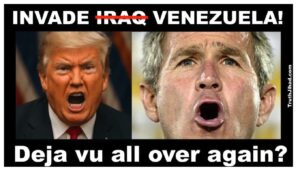The next time someone heaps scorn on you, making fun of your suspicions about the U.S. or nay government by calling you a “conspiracy theorist,” do the following:
- Remind them that the CIA invented the label “conspiracy theorist” to attack and discredit those who question the official narrative of the Kennedy assassination.
- Show them this post.
The term “false flag” has its origins in naval warfare where a flag other than the belligerent’s true battle flag is used as a ruse de guerre or pretext for war. As the term is used in contemporary America, a “false flag” incident is some traumatic event that is contrived and manipulated by the authorities to achieve some covert agenda. The public is given an untruthful version of the event by government and/or the media. The intended result is a “rallying around the flag” effect, wherein an inflamed and duped populace rally in support of the government’s or the deep state’s secret agenda.
Admittedly, it is difficult for the ordinary American to think the U.S. government can stoop so low as to instigate false flags, for that would mean our government is in the hands of people so diabolical, calling them psychopaths does not begin to describe what they are. That is a frightening thought.
But it is a thought not entirely alien to our Founding Fathers who instituted a polity based on a view of human nature as inherently self-interested instead of benevolent, and of government as a necessary evil that must be constrained and delimited. To quote James Madison in The Federalist Papers:
“What is government itself but the greatest of all reflections on human nature? If men were angels, no government would be necessary. If angels were to govern men, neither external or internal controls on government would be necessary. In framing a government which is to be administered by men over men, the great difficulty lies in this: You must first enable the government to control the governed, and in the next place oblige it to control itself.”
For his part, Thomas Jefferson, in his 1787 letter to Edward Carrington, vividly described what government would be if unchecked and unsupervised. He warned that “if once” the people “become inattentive to the public affairs, you and I, and Congress, and Assemblies, Judges, and Governors, shall all become wolves.”
Even with checks and balances in place, the history of the United States is riddled with actual and planned false flags and conspiracies. As an example, the 1964 Gulf of Tonkin incident, in which the U.S.S. Maine and U.S.S. Turner Joy reportedly were fired on without provocation by the North Vietnamese, was a false flag of the Lyndon Johnson Administration. Congress took the bait and passed the Gulf of Tonkin Resolution that, by pre-approving the president’s military actions, gave Johnson a free ticket to wage war in Vietnam. It turned out no Vietnamese boats were even in the gulf at the time of the alleged attack.
Then there was Operation Northwoods of the Kennedy Administration, a false flag of such scope and devious audacity, it takes your breath away.
Proposed by the U.S. Joint Chiefs of Staff and approved by the head of every branch of the U.S. armed forces, Operation Northwoods called for the CIA or other government operatives to undertake acts of terrorism against U.S. military and civilian targets in Guantanamo Bay, Miami, other Florida cities, and even in Washington, D.C. Proposed acts included sinking U.S. ships, having fake Cuban MIGs attack a United States Air Force aircraft, hijacking and shooting down a chartered civil airliner, and gunning down civilians in the streets. The attacks would be blamed on the Fidel Castro government, which would be used as pretexts for a “military intervention” against Cuba.
Thankfully, President Kennedy rejected the proposals. A year and 8 months later, on November 22, 1963, he was assassinated.
Few of us know that in January 2003 before the U.S.-led invasion of Iraq, President George W. Bush had toyed with the idea of a similar false flag to justify the invasion.
Don Van Natta Jr. reports for the New York Times, March 27, 2016, that Bush’s proposal is described in a 5-page confidential memo written by David Manning, UK Prime Minister Tony Blair’s chief foreign policy adviserat the time.
The memo chronicles a private two-hour meeting of Bush and Blair in the Oval Office on January 31, 2003. Five days after the meeting, Secretary of State Colin L. Powell was scheduled to appear before the United Nations to present evidence that Iraq posed a threat to world security by hiding unconventional “weapons of mass destruction” (WMDs), although UN inspectors, led by Hans Blix, had spent six weeks in Iraq hunting with no success for those WMDs.
Stamped “extremely sensitive,” the memorandum, which was circulated among a handful of Blair’s most senior aides, had not been made public. However, several highlights from the memo were first published in January in the book Lawless World, by British lawyer and international law professor Philippe Sands. In early February, Channel 4 in London broadcast several excerpts from the memo. Since then, The New York Times has reviewed the memo in its entirety. Two senior British officials have confirmed the authenticity of the memo, but declined to talk further about it, citing Britain’s Official Secrets Act, which makes it illegal to divulge classified information.
According to the memo, at the time of the meeting, the United States and Britain had been pressing for a second United Nations resolution condemning Iraq, which they would fail to obtain. Bush had issued a public ultimatum to Saddam Hussein: Disarm or face war. But behind closed doors, Bush was certain that war was inevitable. During the January 31 meeting, he made clear to Blair that he was determined to invade Iraq without the second UN resolution, or even if international arms inspectors failed to find unconventional weapons. Bush had even penciled in March 10th as the start date for the military campaign when the bombing would begin.
Bush and Blair candidly expressed their doubts that chemical, biological or nuclear weapons would be found in Iraq in the coming weeks. The two envisioned a quick victory and a transition to a new Iraqi government that would be complicated, but manageable. Bush predicted and Blair agreed that it was “unlikely there would be internecine warfare between the different religious and ethnic groups”, which turned out to be woefully wrong. In fact, former officers of Saddam Hussein’s defeated army would become leaders of ISIS. (See “Blowback: ISIS leaders are former officers of Saddam Hussein’s army”)
According to the memo, Bush and Blair both acknowledged that no unconventional weapons had been found inside Iraq. Faced with the possibility of not finding any WMDs before the planned invasion, Bush talked about three ways to provoke a confrontation.
As described in the memo:
- “The U.S. was thinking of flying U2 reconnaissance aircraft with fighter cover over Iraq, painted in U.N. colours. If Saddam fired on them, he would be in breach” — which could then be used to justify invading Iraq.
- “The U.S. might be able to bring out a defector who could give a public presentation about Saddam’s W.M.D.”
- A proposal to assassinate Saddam Hussein.
Bush was accompanied at the meeting by Condoleezza Rice, who was then the national security adviser; Dan Fried, a senior aide to Rice; and Andrew H. Card Jr., the White House chief of staff. Accompanying Tony Blair were David Manning; Jonathan Powell, Blair’s chief of staff; and Matthew Rycroft, a foreign policy aide and the author of the Downing Street memo of July 2002, which shows that some senior British officials had been concerned that the United States was determined to invade Iraq, and that the “intelligence and facts were being fixed around the policy” by the Bush administration to fit its desire to go to war.
Despite intense lobbying by the United States and Britain, a second United Nations resolution was not obtained. On March 19, 2003, nine days after the target date set by President Bush in the secret meeting with Blair, the U.S.-led invasion of Iraq began, dubbed Operation Iraqi Freedom, consisting of 21 days of major combat operations.
Coalition military casualties were 4,491 for the United States, and 179 for the UK. Estimates on the number of Iraqi civilian casualties range from 3,200 to 7,500.
Many U.S. veterans of the Iraq War have reported a range of serious health issues, including tumors, daily blood in urine and stool, sexual dysfunction, migraines, frequent muscle spasms, and other symptoms similar to the debilitating symptoms of “Gulf War syndrome” reported by many veterans of the 1991 Gulf War, which some believe is related to the U.S.’s use of radioactive depleted uranium.
~Eowyn
Please follow and like us:




Yeah: the Maine incident was a false flag used to start the Spanish-American war in 1898, not the Vietnam War. That was the U.S.S. Maddox.
Human sinfulness will always affect government until Jesus returns. I think that is why the founding fathers urged vigilance. The greater the government (i.e. USA) the greater the temptation. We shouldn't be surprised at the evil but also realize that it will take political, educational AND spiritual power to uproot the evil.
USS Maine sank from common dreadnaught boiler failure, blamed on Spain.
Lusitania was ordered to half speed in submarine zone by Churchill.
FDR knew about Pearl Harbor months in advance.
USSLibertyMovie.com > LBJ Tonkin trick for Israel
"Unequivocal 9/11 Nukes" by James Fetzer